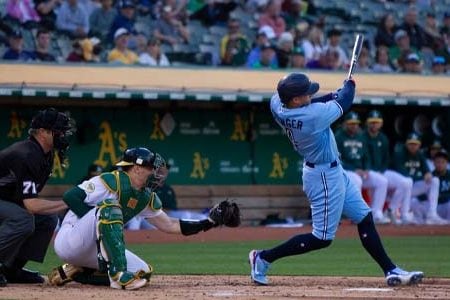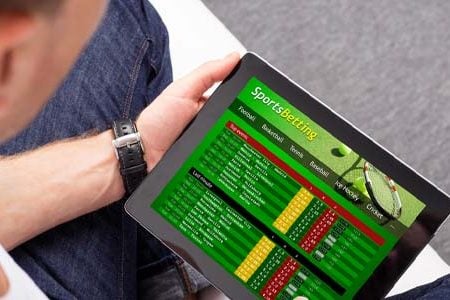In baseball, when a player gets shuffled off the roster, the betting board shifts, too. One minute, a pitcher gets scratched, the next a cleanup hitter pops onto the IL, or the closer maxes out his pitch count. Lines move, odds bleed—if you’re looking at Texas baseball bets, the window between a good price and paying too high shuts fast. Oddsmakers start with a playbook of probabilities, and any roster change rewrites that page before most folks even notice. The smart money is watching Saw the move, didn’t bet it – know the swing counts and where the odds drift when a player sits. Find out where the book is off and where the number moves when the market is still sleeping. That’s how you beat the steam.
Starting Pitchers Drive the Market
In baseball betting, one spot matters way more than any other: the pitcher. Swap out a starter, and lines shift 30 to 50 cents faster than you can finish a hot dog. When a team’s ace can’t go, the books can’t ignore it—every market cares. Moneyline, totals, and individual props all jump, mostly because the bullpen’s workload suddenly gets more certain.
Just because the line moves doesn’t mean the move’s correct, though. Sometimes the books accidentally treat the fill-in like a hidden ace. Most of the time, books peg the downgrade, and a good opener pops out, a nice feel for the team’s pitching depth chart flocks in and grabs it. Sooner the better.
His replacements are taking a downgrade, or books entirely miss the fill-in value in the offense. Kolbrowlers and touts melt, the prop and the public. Top off the public and what a bat. You can jump in line ahead of the public and lock a number that will eventually score a run for you.
Star Hitters and Lineup Depth
A single-star hitter won’t usually shake the line the way a frontline starter does, but an elite DH still counts. If a team loses its No. 4 guy, pitching plans change. Opposing hurlers get more careful, the big remaining bat gets fewer hittable strikes, runs drop, and the books adjust. Quietly but noticed.
It comes down to roster depth. One guy sitting out? No biggie. Two, three? Bench guys get an everyday gig, and the lines bounce fast. Oddsmakers don’t waste time.
For a bettor, it cuts both ways. A strong reserve crew lets the books bump the price just a bit. But get a couple of scrubs or inexperienced guys in the lineup, and totals and spreads move a lot more. In those cases, a Texas MLB sportsbook often moves it quicker than usual. Lone star bettors fixate on the big name, but the entire roster tells the true story.
Bullpens and Late-Game Variance
Closers and setup guys don’t get the same shine as the starters on the cover of the sports page, but they mess with the betting lines behind the scenes. When there’s no trustworthy dude to seal the game in the ninth, the sportsbooks smell trouble. They start padding the margins. Over/unders get a nudge up, and money lines get a little fatter.
Fans often jump to the worst conclusions, thinking every ninth-inning lead is doomed to disaster, but some teams stash legit bullpen gems. It could be a rookie plucked from Double-A, a swing guy stepping in to lock down the ninth, or a starter moving to the ‘pen for the playoffs. By tracking inning counts, pitch loads, and insider tweets, sharp bettors can spot mismatches that the linesmakers miss in real time. A little inside info goes a long way.
This is doubly the case toward the end of the year when relievers are running on fumes. The sharpest books are aware of the danger, but sharp bettors who track the daily grind of bullpens find value the average guy doesn’t see.
Injuries, Call-Ups, and Trade Deadline Shifts
Injuries move the betting market more than pretty much anything besides a pitcher scratch. A random 10-day absence for a bench guy gets no one buzzing. But the second a superstar gets hurt, the books react in a heartbeat. Public casuals freak out, and that leaves a few windows for sharp money to sneak in and take the edge.
When a call-up arrives, the market gets a new layer of intrigue. A hot-shot kid gets a debut, and the hype is wild, but the outcome’s uncertain. He might rake from day one or implode. The books don’t panic—they kink the lines a little and see if it holds. If you dig through scouting reports, underlying metrics, and the minor-league stat line, you can filter the static a lot better than someone who grabs the day’s hot take.
Trade deadline day is a full market hurricane. Contending teams grab a big arm or a stud bat, and the odds don’t even blink—they go immediately to adjusted. If a playoff hopeful jettisons pieces, the market’s reaction is instant shame. This is when the actual line swings get biggest, especially if a contender’s suddenly stacked. Bettors who grind rumor-mill whispers and front-office tea leaves before the deal is done can move stock before the line even opens.
September Rosters and Matchup Dynamics
September expanded rosters are like a cup of iced coffee left out too long—messy. Managers grab a bunch of prospects, flip rotations on their heads, and run the bullpen into the ground. Lineups get shaky, and totals jump unexpectedly because one random pinch-hitter shows up and changes the whole thing.
Teams in the hunt play one way—stable rotations, regular guys in the field. Clubs out of it play another: they try new kids, throw development at the wall, and see what sticks. If bettors know who’s mailing it in and who’s still swinging, those, uh, “party atmospheres” at the stadium turn into profit. Bookies can stumble on those mispriced spots pretty easily.
Then there’s the match-up stuff. Losing your lefty setup man doesn’t sting when the other side is all righty batters. Flip that, though: the same pitcher is missing against a stacked lefty lineup, and it’s a huge hole. September rosters flip like a coin, and those changes are way bigger than they seem. Sharp guys who keep an eye on the tiny details can grab an angle the public money misses all day.
Off-Field Issues and Unexpected Absences
Not every transaction pops up on the injury report or the box score. A guy can suddenly dip from the lineup because of a suspension, personal matter, or some behind-the-scenes rule. When that happens, the change slides by more quietly, especially since oddsmakers don’t want to swing the line until they know more about how long the absence will stretch.
And that delay is pure gold. Take a starting lineup ban that stretches 10 games. It’s a hole that box-score watchers will never see until the games pile up, and the public won’t even know the name, yet the sportsbooks are quietly adjusting the ratings in their heads, just ain’t showing it on the board yet. Staying glued to local beat reporters means you grab the info while they’re still tweeting hot takes and photos of empty lockers, then you snap up the line before it catches up.
Frequently Asked Questions
Q: How to Identify Underdog Opportunities in Texas MLB Betting?
A: Look for games where sportsbooks downgrade a team after one injury but ignore the depth that balances the loss. That’s where underdog lines can be mispriced, and sharp players tracking Texas baseball betting can find extra value.
Q: Do pitcher switch-ups affect betting lines faster than itching swings in the lineup?
A: Totally. News about a starting guy getting pulled travels quickly. A bench player or two sitting usually takes a while to sink in.
Q: Do bullpen injuries move the lines that much?
A: For sure. If a team loses its closer or a key middle guy, overs jump, and the spreads in the last few innings go bananas.
Q: Is it smart to back a rookie who just got called up?
A: Most of the time, no. Just wait a few games to see if he can handle the big league pace. Books and the public fall for the hype, and the reality usually lags.
Q: Does the trade deadline substitute the market that much?
A: Yes, but it’s not always smooth. Major league pitchers getting swapped are the fastest to register, while smaller deals take a few innings.
Why Staying Ahead of Roster Moves Separates Sharp Bettors
Sportsbooks update odds super quickly, but they aren’t always right. Stick to the small details—who’s scratched, who’s hurt, which relievers used up, or which rookie is getting a shot—and you see value before the wider crowd does. In Texas, the markets react more dramatically when a big name gets hurt. That’s a chance to dig into backups, check who’s got the better matchup, and see which bullpen is trustworthy. The key is staying cool, ignoring the noise, and making your bet before the line’s overnight limits. That’s what turns once-in-a-while winners into steady winners.












